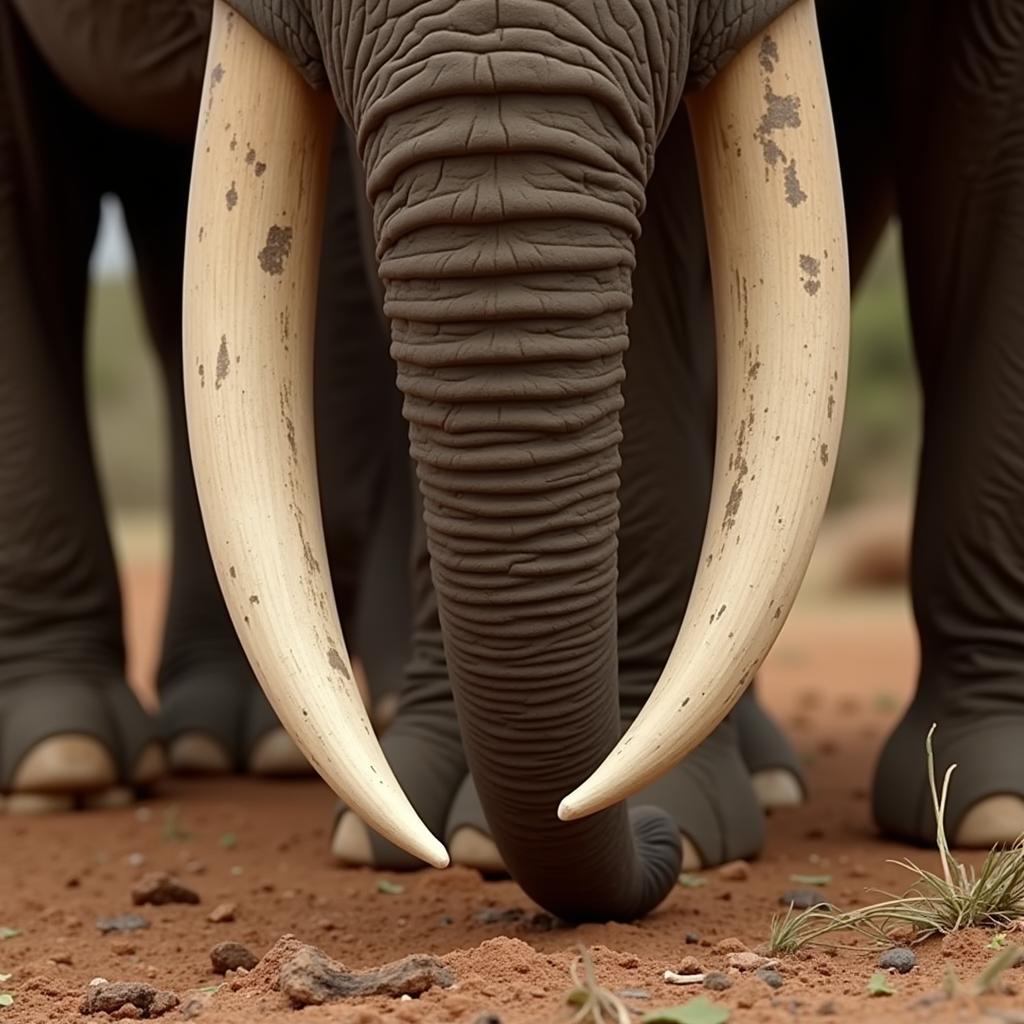African Elephant Adaptations for Survival
African Elephant Adaptations For Survival are remarkable, allowing these majestic creatures to thrive in diverse habitats across the African continent. From their physical characteristics to their complex social behaviors, elephants have evolved a range of strategies to overcome the challenges of their environment. Let’s delve into the fascinating world of African elephant adaptations and discover how these magnificent animals have become so successful.
Physical Adaptations: A Symphony of Evolution
The African elephant’s large size is perhaps its most obvious adaptation. This impressive stature acts as a deterrent to predators, with few animals daring to challenge a fully grown elephant. Their thick skin, while seemingly tough, is surprisingly sensitive, allowing them to detect even the slightest touch. This sensitivity helps them navigate dense vegetation and communicate with other elephants.
The Trunk: A Multi-Purpose Tool
The trunk, a fusion of the nose and upper lip, is perhaps the most remarkable of all african elephant adaptations for survival. It serves as a versatile tool for a variety of functions, including breathing, smelling, touching, and grasping. Elephants use their trunks to gather food, drink water, communicate with each other, and even defend themselves. Imagine trying to pick up a single blade of grass – for an elephant, it’s a piece of cake thanks to its dexterous trunk!
 African Elephant Tusks for Defense and Digging
African Elephant Tusks for Defense and Digging
Tusks: More Than Just Ivory
Tusks, elongated incisor teeth, are another crucial adaptation. They are used for digging for water and minerals, stripping bark from trees, and defending against predators. Sadly, these magnificent appendages have also made them targets for poachers, highlighting the ongoing conservation challenges these animals face. Understanding african elephant adaptations for survival is crucial for developing effective strategies to protect them.
Behavioral Adaptations: Intelligence and Social Bonds
African elephants are highly intelligent animals with complex social structures. Their herds, led by experienced matriarchs, provide protection and support for younger members. These social bonds are crucial for survival, particularly for calves who rely on the herd for protection and guidance. african elephant behavioral adaptations can provide further insight into their fascinating social dynamics.
Communication: A Language of Rumbles and Rumbles
Elephants communicate using a variety of vocalizations, including rumbles, trumpets, and roars. These sounds can travel over long distances, allowing elephants to stay in contact with each other even when separated by dense vegetation. They also use infrasound, low-frequency sounds inaudible to humans, to communicate over vast distances.
 African Elephant Herd Social Behavior
African Elephant Herd Social Behavior
Adapting to the Heat: Keeping Cool Under Pressure
Living in hot, arid environments, African elephants have developed several adaptations to regulate their body temperature. Their large ears, rich in blood vessels, act as radiators, dissipating heat into the surrounding air. They also frequently wallow in mud and water, which helps to cool them down and protect their skin from the sun. Remember the african babul monkey and how it adapts to its environment? Elephants also face similar challenges and have developed their unique coping mechanisms.
Conclusion: A Future for Giants?
African elephant adaptations for survival are a testament to the power of evolution. However, these magnificent creatures face increasing threats from habitat loss, human-wildlife conflict, and poaching. By understanding their unique adaptations and the challenges they face, we can work towards ensuring a future where these giants continue to roam the African landscape. What other remarkable adaptations have you learned about? Consider exploring african dog images to discover the survival strategies of another iconic African animal.
FAQ:
- What is the main purpose of an elephant’s trunk?
- How do elephants communicate over long distances?
- Why are elephant tusks so valuable to poachers?
- What role does the matriarch play in an elephant herd?
- How do elephants adapt to hot climates?
- What are some of the biggest threats to African elephants?
- How can we help protect African elephants for future generations?
Other Questions?
Looking for more information about the African bush elephant? Check out this article on african bush elephant teeth. Or maybe you’re curious about the scientific name? We’ve got you covered: 5 what is the scientific name of the african elephant.
Need help? Contact us 24/7.
Phone: +255768904061
Email: kaka.mag@gmail.com
Address: Mbarali DC Mawindi, Kangaga, Tanzania.


